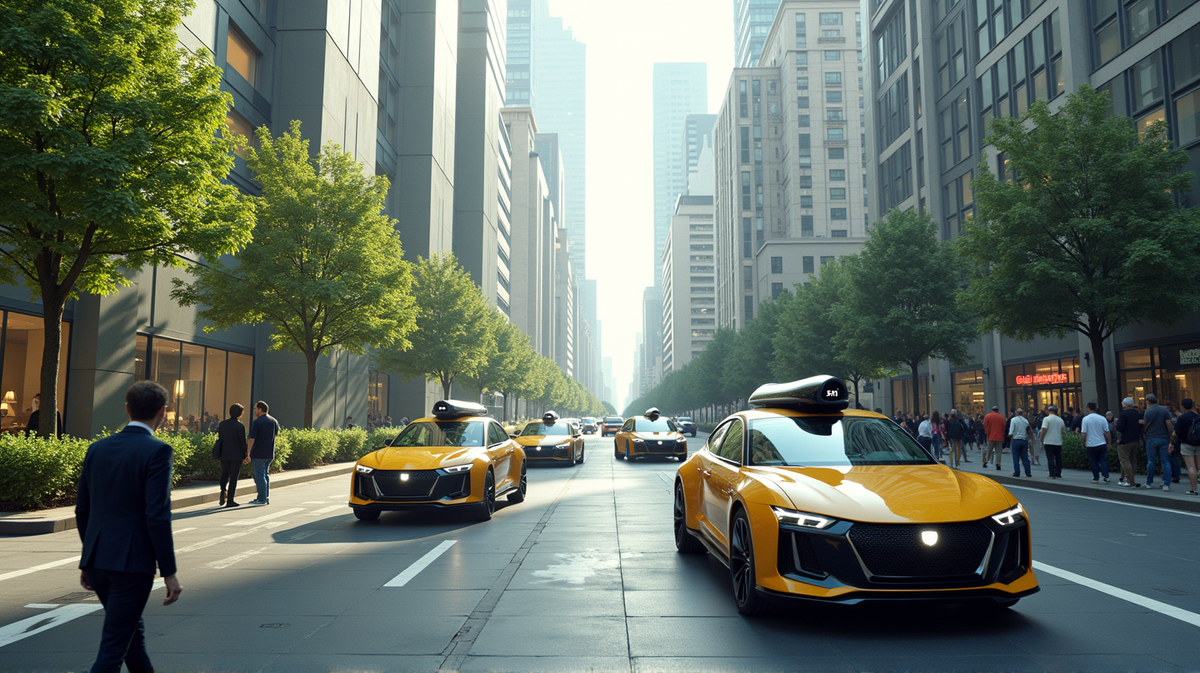Exploring the Incredible Growth of the Robotaxi Market: A USD 188 Billion Future
The robotaxi market is set to skyrocket from USD 4.43 billion in 2025 to USD 188.91 billion by 2034, driven by innovation in autonomous technologies and sustainable urban transport.

In a world increasingly driven by technological innovation, the robotaxi market stands as a shining example of how advanced technologies are reshaping the urban mobility landscape. According to Precedence Research, the market is projected to expand from USD 4.43 billion in 2025 to a staggering USD 188.91 billion by 2034. This spectacular growth is attributed to several key factors, including advancements in autonomous technology, the push for sustainability, and the growing demand for more efficient urban transportation systems.
The Rise of Autonomous Innovation
At the heart of this extraordinary market boom lies the rapid advancement in autonomous driving technologies. With key players like Tesla and Waymo leading the charge, self-driving cars are no longer a thing of science fiction but a tangible reality. These innovations in automation not only enhance operational efficiency but also revolutionize how cities plan public transportation and personal mobility.
The Sustainability Push
The shift towards sustainable practices is another critical driver of growth in the robotaxi sector. Electric robotaxis reduce emissions, leading to cleaner air and quieter urban environments. By integrating mobility-as-a-service platforms, cities hope to lessen traffic congestion and the dependency on personal vehicle ownership, ultimately reducing the global carbon footprint.
Urban Mobility’s New Face
Robotaxis are more than just a technological marvel; they represent a significant opportunity to transform urban planning. With decreased reliance on personal vehicles, urban spaces can be creatively reimagined. This could mean reduced necessity for parking areas and more space for pedestrian walkways, bike lanes, and green spaces, enhancing the overall quality of city life.
Key Players Redefining the Market
Companies like Cruise, Lyft, and Baidu are fine-tuning their autonomous services, with developments ranging from Level-4 driverless permits to collaborations for more extensive coverage. These innovations ensure that the robotaxi market remains competitive and continuously evolving, providing consumers with safer and more reliable transportation options than ever before.
The Challenges Ahead
Despite the promising future, the road to widespread robotaxi adoption isn’t devoid of challenges. Regulatory hurdles remain a significant barrier. The lack of standardized federal guidelines leaves companies to navigate a patchwork of local regulations. However, as urban areas continue to embrace smarter city initiatives, solutions to these regulatory challenges are likely on the horizon.
Future Opportunities
The future of the robotaxi market is not just about technological advancements but also about innovative business models. The ability to combine shared, on-demand, autonomous vehicles with existing urban infrastructure offers a unique growth opportunity that many believe will redefine personal and public transport as we know it.
Transforming Cityscapes Across the Globe
From Phoenix to Shanghai, cities are gradually seeing the deployment of robotaxis as a part of their transportation landscape. This transformation promises not only efficiency and sustainability but also opens doors for economic growth by allowing companies to explore and implement cutting-edge technologies.
As the world stands on the cusp of a transportation revolution, the robotaxi market serves as a testament to how far we’ve come and a glimpse into an exciting future of intelligent, efficient, and sustainable urban mobility. According to GlobeNewswire, this market is poised for unprecedented growth and success.